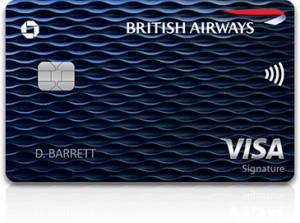This is a beginner's guide, so if you are already an advanced user, this post probably won't help you much. But if you don't know what points and miles are, or if you don't know a lot, this post is for you.
Read This First!!!
Using credit cards can be dangerous to your financial health and in turn can negatively affect all aspects of your life. These are some rules you have to follow. If you can't follow these rules, wait until you are in better financial shape to focus on collecting points and miles.
- Pay your balance in full and on time. Carrying a credit balance is a great way to wreck your credit, affect your ability to get a loan, and cost you money. I'm sure you've noticed that almost all credit cards have very high interest rates. Paying those high rates on a balance will negate any benefits you get from points and miles. Please don't put you or your family at risk by charging more than you can afford simply to collect points and miles.
- Don't miss out on a sign up bonus but don't overspend to get the bonus. You typically have three months to spend a specified amount (usually $3000-5000) to get a bonus when you sign up for a new card. These bonuses are significant so you need to plan before you sign-up. Wait until you are ready to make a larger purchase before signing up. And keep tabs on what you spend so you don't miss the deadline.
First of all, what are points and miles?
Points and miles are essentially the same thing-a form of currency used by credit card companies and loyalty programs to reward you for using them. You get rewarded with points and miles and they get a loyal customer. The main difference is the amount of the reward and the difference in value of the rewards which I'll explain as we go.
Every time you buy groceries, gas, eat out, fly, stay in hotels, etc., and pay with an applicable credit card, you're earning points and miles that you can apply towards your next flight, hotel, vacation, or even cash back with some cards. If you used a debit card for these purchases you got nothing.
3 Types Of Credit cards for Points And Miles
I group the types of credit cards you can use into three categories.
- Bankcards with transferable points.
- Hotel points and airline miles
- Cash back cards
I personally focus on the cards associated with loyalty programs (Delta, Marriott Bonvoy, etc.) and transferrable points. In addition to points and miles, focusing on loyalty programs gets you status bonuses like room upgrades, early/late check-ins, priority boarding, and airport lounges. With transferrable points, you can transfer them to hotel and airline partners or purchase travel directly. These cards are usually more expensive as far as annual fees, but offer a lot of benefits, flexibility, and value. I don't use any cash back cards but a lot of people love them. I have included a brief discussion on them.
Bank Cards With Transferrable Points
My favorite cards in this category are the Chase Sapphire Reserve, American Express Platinum, and Citi Prestige cards. These higher-end credit card each have their own branded rewards program (Chase Ultimate Rewards, American Express Membership Rewards, and Citi ThankYou Rewards). And all of them come with a host of travel perks such as increased travel and purchase protections, airport lounge access, credits for Global Entry or TSA fees, statement credits for travel expenses, and much more.
The Chase Sapphire Reserve and American Express Platinum are my favorite premium cards. I don't have a Citi Prestige card but I hear great things about it.
The Chase Sapphire Reserve has a lot of great features. Although the yearly fee is $550, you get a $300 annual travel credit and your points are worth 50% more if you redeem them through the Chase Ultimate Rewards portal. For example, 100,000 points are worth $1500 instead of $1000. You receive 3 points per $ spent on travel after earning the $300 credit, 3 points per $ spent on dining (my go to card for this) and 1 point per $ spent on all other purchases. In addition, you get a $100 credit every 4 years for TSA Pre-Check or Global Entry fees, Priority Pass lounge access, benefits at the Luxury Hotel & Resort Collection, and one of the best travel and purchase insurance coverages in the business.
The American Express Platinum is the oldest card in my wallet and now that it has improved insurance coverage will probably be used extensively again. The fee is also $550 per year. It includes a $200 credit for incidental expenses with a pre-chosen airline per year if charged to your AMEX card, 5 points per $ spent for flights booked directly with airlines or with American Express Travel, and 5 points per $ spent on prepaid hotels booked on amextravel.com. It also includes complimentary benefits with an average total value of $550 with Fine Hotels & Resorts® at over 1,000 properties, unlocks access to more than 1,200 airport lounges across 130 countries, up to $200 in annual Uber savings, $100 credit per year at Saks Fifth Avenue, elite status at Marriott Bonvoy and Hilton hotels, excellent car rental coverage and effective January 1, 2020, they initiated significant improvements to their travel insurance benefits.
Hotel Points
My favorite hotel credit cards are the World of Hyatt Visa, the Marriott Bonvoy Brilliant American Express Card, and Hilton Honors Aspire American Express Card.
The World of Hyatt Visa Card gives you automatic Discoverist status, which includes expedited check-in, room upgrades and late checkout when available. Plus, it allows you to reach the next elite status tier, Explorist, through card spending. It also gives you 5 qualifying nights status to start the year with and an additional 2 qualifying nights for each $5000 spent. It takes 60 nights or a whopping $140000 in expenditures to get Explorist status. .
The Marriott Bonvoy Brilliant American Express card offers complimentary gold status, a $300 credit for Marriott purchases and 15 elite night credits toward toward elite status. You earn 6 points per $ spent at participating Marriott Bonvoy hotels, 3 points per $ spent at US restaurants and on flights booked directly with airlines and 2 points per $ spent on all other purchases. It also has a complimentary anniversary night valued up to 50000 points. On top of that, you get gold status and a $300 credit for Marriott purchaes. Spending $75000 in one year gets you Platinum status with all its perks
The Hilton Aspire Credit Card gives you complimentary Diamond status which includes 100% extra bonus points on all base points you earn, room upgrades, access to over 1200 airport lounges, and up to $250 in statement credits, plus $250 Airline Fee Credit for incidental charges that are charged by the airline to your Card. You also get 14 bonus points per $ spent at participating hotels or resorts, 7 bonus points per $ spent on eligible flights booked directly with airlines or amextravel.com, and 3 bonus points per $ spent on all other eligible purchases.
Airline Miles
My favorite airline cards are the Delta SkyMiles® Reserve American Express Card, the Citi® / AAdvantage® Executive World Elite™ MasterCard®, and the British Airways Visa Signature® Card.
The Delta SkyMiles® Reserve American Express Card gives you 3 miles per $ spent with Delta and 1 mile per $ spent on all other purchases. My favorite perk though is the Status Boost where you can earn 15,000 Medallion Qualification Miles (MQMs) after you spend $30,000 in purchases on your Card in a calendar year. You can get this perk up to four times per year which makes it a lot easier to get a higher elite status. You also get a MQD waiver, complimentary Delta Sky Club® access, 2 one-time guest passes per year, $39 guest access, and complimentary access to The Centurion Lounge®. in addition to all that, you get up to a $100 Fee Credit for TSA Pre-Check or Global Entry, first checked bag free, priority boarding, and a companion certificate upon renewal of your card.
The Citi® / AAdvantage® Executive World Elite™ MasterCard® offers 2 miles per $ spent with American Airlines, 1 mile per $ spent on all other purchases, and 10,000 elite qualifying miles(EQMs) after you spend $40,000 in purchases within the year. Enjoy priority check-in, priority airport screening (where available) and boarding privileges for you and up to eight travel companions on the same reservation. You also receive a statement credit, up to $100 every 5 years, as reimbursement for your application fee for Global Entry or TSA TSA Pre✓. The best perk in my opinion is the Admirals Club membership which includes access to more than 50 lounge locations worldwide.
The British Airways Visa Signature® Card offers 3 Avios for every $1 spent on purchases with British Airways, Aer Lingus, and Iberia, 2 Avios for every $1 spent on hotel accommodations when booked directly with the hotel, and 1 Avios for every $1 spent on all other purchases. You get statement credits of $100 for Economy and Premium Economy – or $200 for Business and First Class seats – three times per year, up to $600, when you book a reward flight to London traveling on British Airways and pay taxes, fees and carrier-imposed charges with the British Airways Visa Signature® Card. My favorite perk is that you can earn a travel together ticket each year by making $30,000 in purchases on your British Airways Visa Signature card. You redeem your Avios for one reward seat for yourself and use your Travel Together Ticket to bring a companion in the same cabin, even first class.
Cash Back Cards
Cash back cards rebate you a % of the purchases you make on the card. The amount depends on the purchase category but ranges from 1-6% of the purchase. The three types of cash back cards are flat-rate, rotating bonus, and tiered.
Flat-rate cards give you the same amount of cash back on every purchase. Use these if you want to use one card for everything and don't want to spend time thinking about which card to use.
Bonus category cards pay a big bonus in categories that rotate quarterly. It could be 5% on gas one quarter and 5% on groceries the next. They usually pay 1% on everything else. These cards are good if you don't mind tracking the bonus category changes every 3 months.
Tiered cards are the most common and pay higher rates on certain types of bonus categories that do not change. For example, a card might offer 3% cash back on groceries and 2% cash back on gas. You typically get at least 1% cash back on all other purchases.



